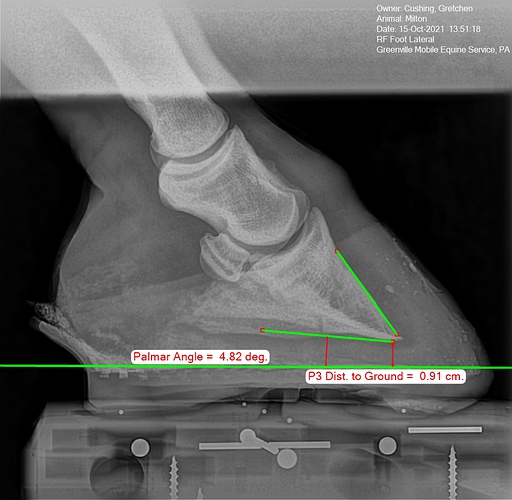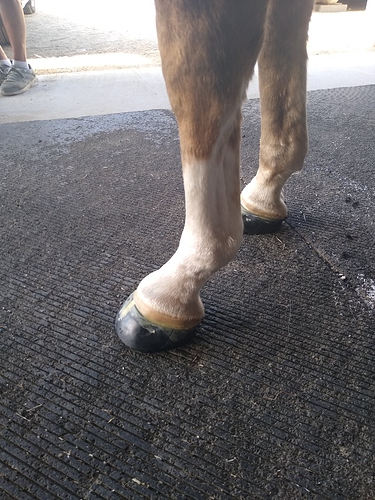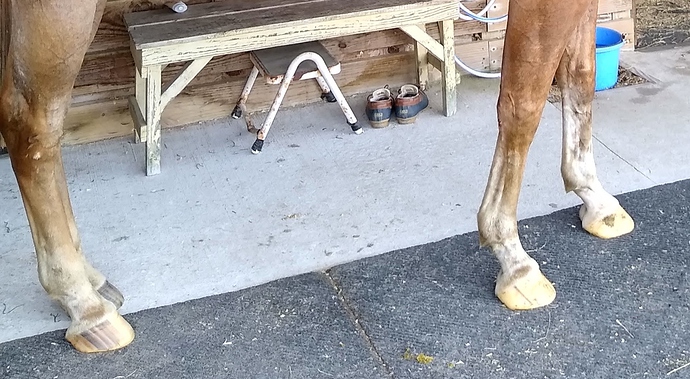The vet has come and gone! Hooray!
No laminitis. X-rays of feet just show thin soles. The vet and my farrier work together very closely, and the vet says to keep him in the boots for a few more cycles to see if that helps him build sole. My farrier did mention one of the last times I spoke to her that she could put a different packing in besides Magic Cushion that is much softer and forgiving. Though honestly, he’s hardly showing any lameness up front at all now. We turned him tightly out in the gravel and lunged him in the harder packed round pen and on the grass. His hind end lameness was more pronounced, though every once in a while he’d head bob (or something…it’s really weird). She said he’d take one step that looked like his head would go up in the bob, but then he’d hit another stride at another part of the circle where his head would duck down.
He flexed positive for both hocks and stifles…3/5 on left and 4/5 on right.
We’re going with a course of Adequan first to see if that alleviates his issues. If it doesn’t, we’ll inject hocks and stifles. I’m hoping the Adequan does the job for him.
She did say that the equicore/bands that I had started using could have forced the issue and made it present itself due to him working more from the hind end.
So, that’s where we are. She did say if the Adequan doesn’t work we might also pull blood and look to see if there is something systemic going on, but given his very obvious reaction during the flex test, she felt sure the Adequan was a good starting place.
I’m just glad his front feet look good (minus the thin soles). His palmar angle on his left front is dropped more than his right, but she didn’t seem concerned and she said I had the best farrier for any issues there. She has sent the x-rays to my farrier as well.
So, yeah. I’m pretty happy. I’m just going to continue moseying around on him bareback at the walk until the Adequan comes in and then we’ll see where we’re at. Hopefully, he’ll be feeling spiffy in a month or so!





